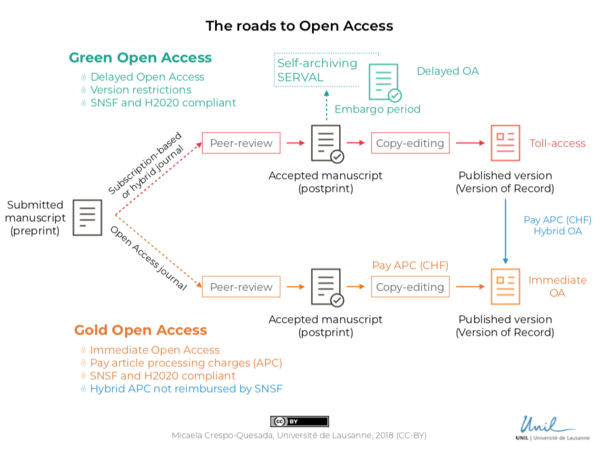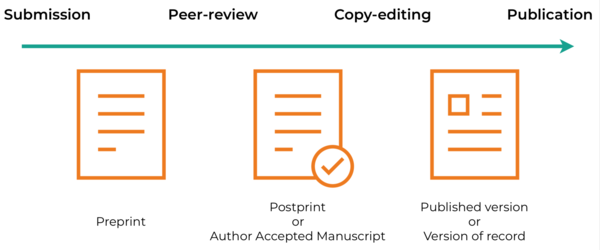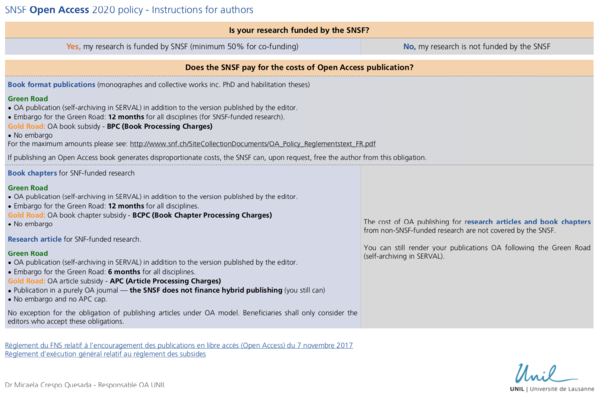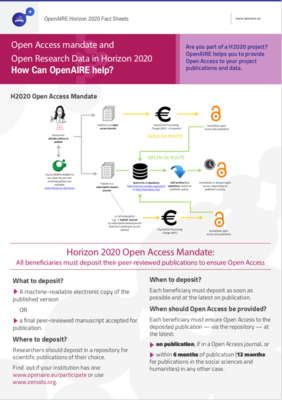Open Access
Open Access, as defined by the Budapest Open Access Initiative, is the free of charge, immediate, online availability of scientific publications with full re-use rights. What makes it possible is the internet and the consent of the copyright holder.
Open Access is entirely compatible with peer-review, copyright, revenue, prestige, quality and other services normally associated with conventional scientific literature.
If you want to know what Open Access is all about in 5 minutes, watch the introductory video below.
By SHB Werkgroep Onderzoeksondersteuning and licensed under Creative Commons Attribution-Sharealike.
No.
Publishing in a (pay-to-publish or free-to-publish) Open Access journal constitutes the Gold Road towards Open Access. Open Access works published via the Gold Road are immediately openly accessible and are usually protected by an open licence, such as Creative Commons.
However, there is an alternative way to publish in Open Access, namely the Green Road. The Green Road refers to the parallel publication of a version of the manuscript in an open repository, or self-archiving. Open repositories can be institutional, as our own SERVAL, or disciplinary. The publication is often delayed (embargo period) and allowed only for the author accepted manuscript (AAM), also known as postprint. This is the manuscript accepted for publication (post peer-reviewed), but before all copyediting by the editor. There are no costs for researchers to follow this road.
Below you can find a scheme that shows the available roads to Open Access.
With the development of OA, parasitic or « predatory » OA journals have started to exploit the « author pays » model. The authors, generally solicited by email, are invited to submit articles, which are systematically accepted after publication fees are payed for, regardless of the scientific value. One must note that this problem exists only for Gold OA journals.
Jeffrey Beall, of the University of Colorado, created in 2008, scholarlyoa.com, a website that contained a list of potentially predatory journals based on 52 criteria. This list was used as a standard until its discontinuation in January 2017. An archived version is still available and other sites have tried to carry the torch. It is also possible to check the Directory of Open Access Journals, DOAJ, to evaluate the credibility of an OA journal.
The recently launched cross-sector initiative called « Think. Check. Submit » is a campaign seeking to help researchers identify journals of quality for their research. It consists of a simple check-list that researchers can use to evaluate journals or publishers. This initiative is an excellent way of fighting against « predatory » journals.
Yes.
Though article OA is well developed, monograph OA is still in its infancy and practices are much less standardised than for journals. Nevertheless, more and more publishers allow for the OA publication of digital versions of books from the moment of publication (Gold OA). The Directory of Open Access Books (DOAB) lists academic, peer reviewed Open Access books. OpenEdition is another Open Access Book platform mainly for books in French. Both are excellent sources to get to know the publishers who already publish books in Open Access. The costs of Gold Open Access to books is financed by the SNSF for all swiss-based researchers.
It is also possible to gran Open Access to books through the Green Road, or the self-archiving of the manuscript and its opening after an embargo. In this case, researchers are expected to negotiate with publishers on a case-by-base basis. UNIL researchers can request funding for Green OA for books through the Fonds de publications UNIL.
The Encyclopaedia Britannica defines academic freedom as "the freedom of teachers and students to teach, study, and pursue knowledge and research without unreasonable interference or restriction from law, institutional regulations, or public pressure. Its basic elements include the freedom of teachers to inquire into any subject that evokes their intellectual concern; to present their findings to their students, colleagues, and others; to publish their data and conclusions without control or censorship; and to teach in the manner they consider professionally appropriate."
From this point of view, Open Access mandates that allow for a mix of Open Access scenarios (namely, a mix of Green and Gold Open Access) should not limit the academic freedom of researchers.
Indeed, by allowing both roads, researchers can choose the most appropriate outlet for their works, and subsequently follow the necessary road to grant Open Access to them. Gold OA allows for the publication in OA journals and books, whereas Green OA allows for the parallel publication of the article in a subscription journal and the author manuscript (or post-print) in an institutional repository.
Simply fill in the form below with your details!
Open Access mailing list
In principle, yes, but you must first check which rights you've transfered to your editor.
Use this checklist to know where to find this information and to know if and how the deposit is possible.




